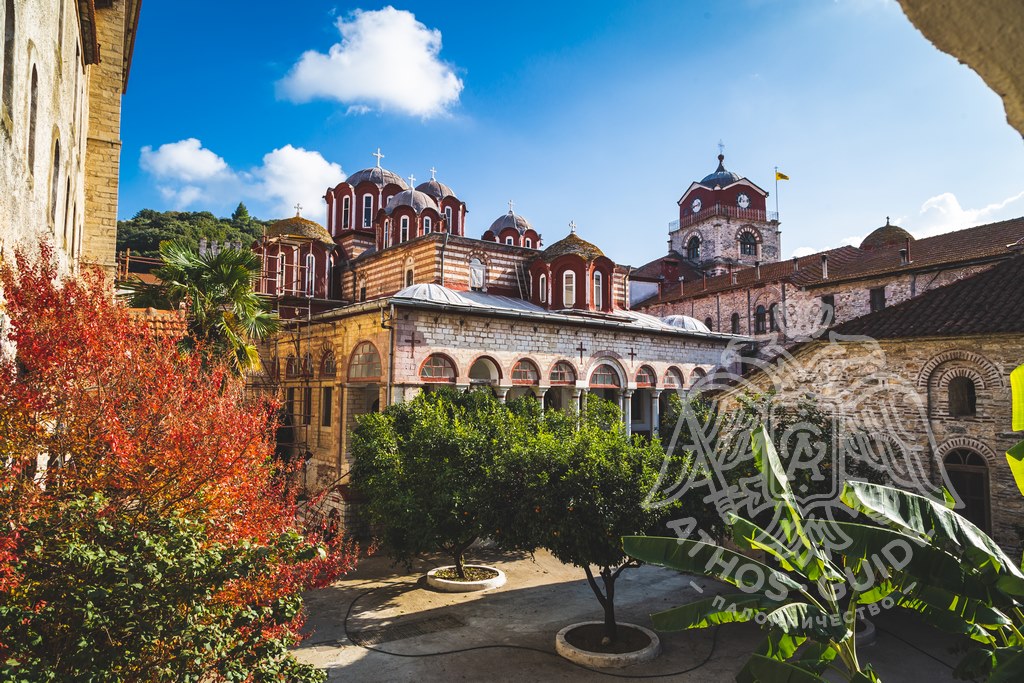
The integration of a person into the Autonomous Monastic State of Mount Athos is primarily a spiritual process. One needs to feel the necessity to dedicate oneself to Jesus Christ, to feel the divine call that will prompt one to marry the church and withdraw from the worldly life.
Meanwhile, it requires a spiritual struggle and preparation, as monasticism is not an easy option. It presupposes the maturity and intellectual enlightenment of a man. Especially in Mount Athos, which is the garden of the Mother of God where each person can feel Her grace. She would speak to one's heart with Her light and Her wisdom; She would choose one and call one to serve Her state..jpg)
First contact
Initially, anyone who begins to reflect in this direction, wishing to join the Athonite monastic state, should visit Mount Athos one or more times as a simple traveler. For this reason, he should issue a Diamonitirion for as long as he wishes, for some days or weeks. Furthermore, he should arrange his transportation to Ouranoupoli, from where the ferry boats depart for the monasteries of Mount Athos, such as the Holy Monastery of Saint Panteleimon, the Holy Monastery of Iviron, the Monastery of Great Lavra, etc. Finally, he should arrange his stay and be in contact with the monastery that will host him.
This first trip will initially bring him in contact with the monks; it will allow him to visit different monasteries, meet the abbots, and discuss the possibility of joining the Athonite community with an elder spiritual father.
Back to the secular life
For young people who wish to enter monasticism, a return to the outside world is often suggested after the first visit. During this time, one is given time to process one's intentions, to be sure of one's desire and to feel the authenticity of the call of the Holy Mother of God.
Afterwards, if one still wishes to become a monk, he can contact his elder spiritual father, speak with the monastery of his choosing and declare his decision to return back to Athos.
Return to the monastic state
Upon the next journey, the prospective monk should talk to his spiritual elder, as he did during his first stay. With the blessing of the latter and the approval of the monastery's Synaxis (general assembly), he will begin his journey as a novice.
 At the monastery, he will be informed about the procedure that may be required (e.g., application for a novice monk). Not all monasteries require the same documents or certificates, as the path to monasticism is primarily spiritual and therefore, in many cases, the spiritual approval and support of the monastery is sufficient.
At the monastery, he will be informed about the procedure that may be required (e.g., application for a novice monk). Not all monasteries require the same documents or certificates, as the path to monasticism is primarily spiritual and therefore, in many cases, the spiritual approval and support of the monastery is sufficient.
Preparation period
Once a person has been admitted to the monastery as a novice, he does not need a Diamonitirion in order to remain in the monastery. He ceases to be a guest, does not move to other monasteries, dresses in the habit of a novice monk and has his own place in the community.
The period of preparation lasts 1-3 years. The novice monk consults his elder and ministers the monastery. He begins a certain monastic handicraft and in general, follows the spiritual life of all monks.
The monastic initiation
Once the period of preparation is completed and the novice is spiritually ready to enter monasticism, follows the monastic initiation. According to the Holy Fathers, it constitutes a sacrament of the Orthodox church.
After the initiation, the monk remains in the monastery where he had served as a novice.
In case he does not have a Greek citizenship, he automatically acquires one after the sacrament.
Grades of monasticism
During his monastic life, a monk can ascend several ranks of monasticism. He can either live as a retreating monk, or remain in the commune. Furthermore, his rank may change depending on his spiritual progress.

